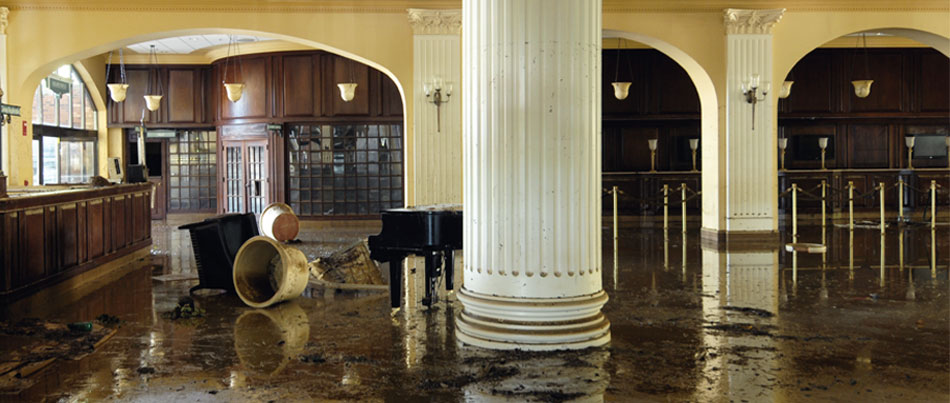Here in the next paragraph you can find additional worthwhile help and advice relating to Keeping Your Home Safe This Holiday Season.

Though water offers life, water breach on parts where it's not meant to be can result in damage. If the water soaks into your framework, it can peel off away surface areas as well as wear down the foundation. Mold as well as mildew likewise prosper in a wet setting, which can be hazardous for your wellness. Residences with water damages odor old and also stuffy.
Water can come from several sources such as tropical storms, floodings, ruptured pipelines, leakages, and also sewage system concerns. In case you experience water damage, it would certainly be excellent to know some security preventative measures. Right here are a few guidelines on just how to handle water damage.
Do Prioritize Home Insurance Coverage
Water damages from flood dues to hefty winds is seasonal. You can also experience an unexpected flooding when a malfunctioning pipeline unexpectedly bursts into your house. It would certainly be best to have home insurance coverage that covers both acts of God such as all-natural catastrophes, and emergencies like broken plumbing.
Don't Forget to Turn Off Energies
In the event of a disaster, particularly if you reside in a flood-prone location, it would be recommended to switch off the main electric circuit. This cuts off power to your entire house, stopping electric shocks when water comes in as it is a conductor. In addition, don't fail to remember to shut off the main water line shutoff. Furnishings will certainly move around and create damages when floodwaters are high. Having the primary shutoff shut off prevents further damages.
Do Remain Proactive as well as Heed Climate Notifies
Pay attention to discharge warnings if you live near a river, lake, or creek . Doing so decreases prospective home damage.
Don't Disregard the Roof
You can avoid rain damage if there are no openings and leakages in your roofing system. This will certainly prevent water from streaming down your wall surfaces and saturating your ceiling.
Do Focus On Tiny Leaks
A burst pipeline does not take place over night. You might notice bubbling paint, peeling wallpaper, water touches, water discolorations, or dripping noises behind the wall surfaces. Have your plumbing fixed prior to it results in large damages.
Do Not Panic in Case of a Burst Pipe
Keeping your clearheadedness is vital in a time of dilemma. Since it will stifle you from acting quick, stressing will just intensify the trouble. When it involves water damages, timing is key. The longer you wait, the more damage you can expect. Thus, if a pipe bursts in your home, right away turned off your primary water valve to cut off the source. Then disconnect all electrical outlets in the area or switch off the breaker for that part of your house. Call a trusted water damage restoration professional for aid.
Water offers life, water intrusion on components where it's not meant to be can result in damage. Residences with water damage scent old as well as musty.
Water damages from flood charges to heavy winds is seasonal. You might observe bubbling paint, peeling off wallpaper, water streaks, water discolorations, or trickling noises behind the wall surfaces. When it comes to water damage, timing is vital.
Some Do's & Don't When Dealing with a Water Damage
DO:
Make sure the water source has been eliminated. Contact a plumber if needed. Turn off circuit breakers supplying electricity to wet areas and unplug any electronics that are on wet carpet or surfaces Remove small furniture items Remove as much excess water as possible by mopping or blotting; Use WHITE towels to blot wet carpeting Wipe water from wooden furniture after removing anything on it Remove and prop up wet upholstery cushions for even drying (check for any bleeding) Pin up curtains or furniture skirts if needed Place aluminum foil, saucers or wood blocks between furniture legs and wet carpet Turn on air conditioning for maximum drying in winter and open windows in the summer Open any drawers and cabinets affected for complete drying but do not force them open Remove any valuable art objects or paintings to a safe, dry place Open any suitcases or luggage that may have been affected to dry, preferably in sunlight Hang any fur or leather goods to dry at room temperature Punch small holes in sagging ceilings to relieve trapped water (don't forget to place pans beneath!); however, if the ceiling is sagging extremely low, stay out of the room and we'll take care of it DO NOT:
Leave wet fabrics in place; dry them as soon as possible Leave books, magazines or any other colored items on wet carpets or floor Use your household vacuum to remove water Use TV's or other electronics/appliances while standing on wet carpets or floors; especially not on wet concrete floors Turn on ceiling fixtures if the ceiling is wet Turn your heat up, unless instructed otherwise

I hope you enjoyed our post on Safety Tips To Prevent Fire And Water Damage. Thanks so much for taking time to read through our blog. For those who enjoyed reading our blog post if you please remember to share it. Thanks for your time. Don't hesitate to pay a visit to our website back soon.